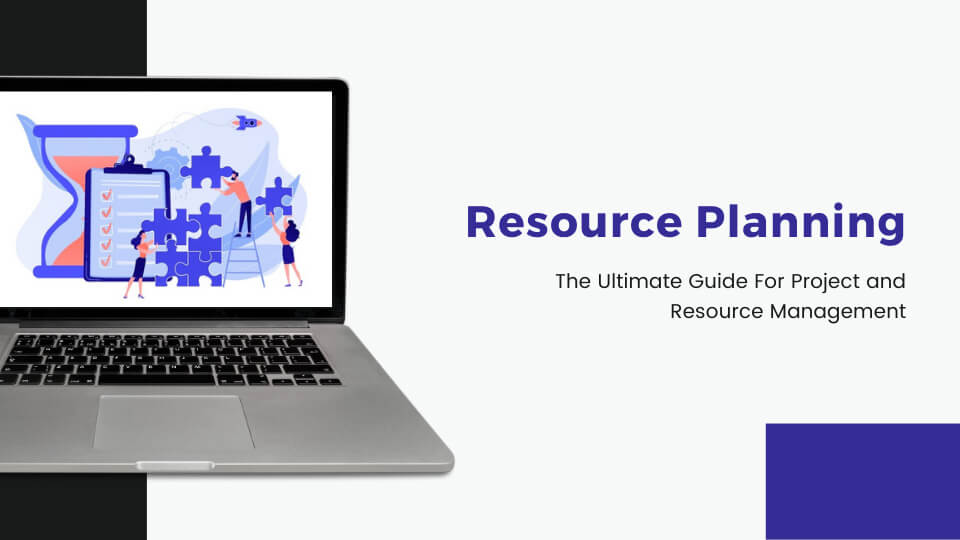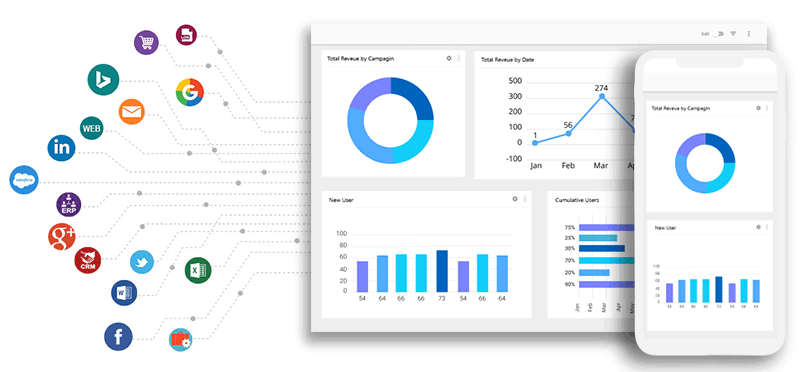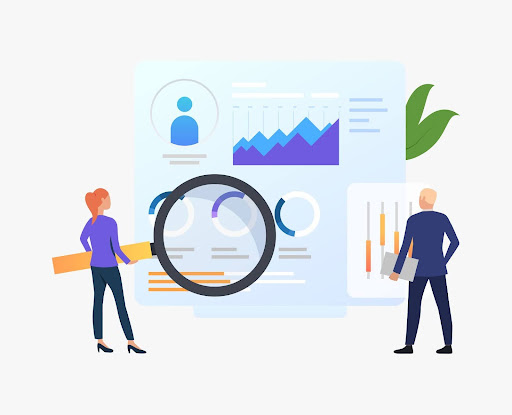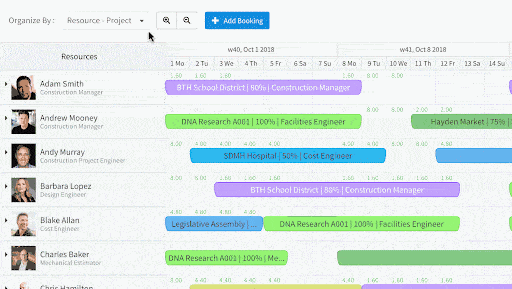
Resources are an expensive component of a business but without that, you cannot operate. Many organizations give in to the temptation of saving each penny and reducing resource investments till they earn significant returns. But that is not a good strategy for the company's growth.
The fact is that resource planning and management are crucial for any business for its success. It's impossible for your project plan to succeed if you don't have a realistic view of your employees. You should also know the time spent on various tasks, and what is needed to get those projects completed.
So, how can you nail that? A thorough resource plan is the first step toward successful project management. The right resource management software can help you create a resource plan and optimize the resources available in hand.
A document that identifies, manages, and lists the resources needed to complete a specific project successfully is called a resource plan. Resources are those assets that are required to run a project.
However, a resource could also include equipment, supplies, tools, materials, time, and people. A detailed resource plan maps out the precise quantities of human resources and other resources like machinery, tools, finance, etc.
It's also important that you align your resources with the budget and schedule of the project. Therefore, it's best to choose a resource management software that can get everything sorted for you in just one tool.
eResource Scheduler is a leading project management software that allows you to plan and manage your resources, keep a tab on the timelines, and manage the budget - all in one platform.

There are four key stages to resource planning. You must follow these steps to ensure that your bottom line stays secure and that you get the resources when you require them.
But before the project is kick-started, you should identify the resources you'll require to execute it. Then, get the required finances for resources and get a sign-off from the stakeholders.
To set the ball rolling, you first need to decide on the project requirements. The next step is to determine how many people you need and what skill set is required.
After defining the objectives of your project, you should choose the right strategy and decide the resources you'll need. This decision should be as efficient and cost-effective as possible. Here, resources mean people, equipment, facilities, materials, etc.

Now, start building a team with the right people who have the required skills and experience for your project. Source the equipment and hire people. This stage of resource planning also includes developing team roles, contracts, budgets, procurement needs, performance measurement criteria, and any other policies and procedures.

At this stage, you start defining the roles and responsibilities of your resources, including that of contractors. If you're renting tools and machinery for the project, ensure that you return them in good condition. This includes maintaining the facilities too.
You also need to monitor your resources during the project execution stage. This is important to check if all the milestones are being achieved as expected and without any glitches.
At this point, it's important to track the resource utilization rate to check if you are using your resources efficiently. In case the utilization rate is quite low, you must do a cost-benefit analysis. So, it's wise to evaluate all the outcomes to ensure that you stay on track.
Resource management is a vital part of the project management process. It is a fundamental activity of human resource management — be it large organizations or small startups. Managing projects always involves managing resources. Whether the project is to design a new software feature or to design and develop a web-based training.
Resource planning has a direct contribution to the project's end result. If your project is over-resourced, you will waste money, but if it's under-resourced, you can miss your timelines. Now, imagine if you've aligned the wrong resources to your project. The client's expectations would never be met. Therefore, project managers should understand the type of resources that would suit a specific project and if the available people fit the bill.

Optimize your budget spends
Enhance your team workflows with the help of resource forecasts and capacity reporting
Drill-down to determine why you overshot the budget on a specific project (and what can be done differently in the future

Meeting project schedules and sticking to budgets are the two main obstacles in project management. Resource planning is a segment of project cost management. And that is why project management and resource planning go hand in hand. If your deadlines aren't achievable or your budget is off track, then your project could be disastrous.
A project's profitability is closely related to how many people you need to deliver it. Hence, the most important component of resource planning is scheduling your resources accurately.
A resource management software is a system that helps you to plan, allocate, and schedule your resources for various projects. This single online platform can manage your people, tools, equipment—and everything that is crucial to your success.
Resources have costs associated with them. Hence, you need to manage these expenses and timeframes in a way that it is aligned with the schedule. A resource management software enables you to plan while keeping your resources in mind.
It also helps you to allocate them as per their availability and track who is working on which project and when. What's more? A resource management software such as eResource Scheduler helps businesses derive optimum benefit from their most valuable asset - people.
So, do you want to tap the highest potential of your resources while having a perfect resource plan? Try this multi-user, Cloud-based, feature-rich tool for resource planning and management.
Are you still using spreadsheets to organize your budgets and timelines? How about a dedicated resource planning tool that is convenient and also sets your projects and team for success? A project management software like eResource Scheduler lets you schedule your resources and time on various projects with accuracy.
A resource planning tool can help you to: Identify the right resources
If you want to identify the right resources, pinpoint specific skills, tools, and materials essential for project accomplishment, and spot skill gaps, a resource planning tool can immensely help. It can ensure the available resources are used optimally and no one's sitting idle on their desk, which means better efficiency and performance.
Using resource management tools, organizations can make their resource allocation more proactive. The planning tool anticipates project needs on a daily, weekly, or monthly basis, aiding in strategic scheduling, and this foresight minimizes resource shortages or excess for better project planning accuracy and seamless workflow execution.
In addition, businesses can also resort to enterprise resource planning software to keep their workflows organized. From mapping out resource allocation, timelines, and tasks systematically to providing a comprehensive roadmap, and ensuring clarity, alignment, and effective coordination among team members, an enterprise resource planning tool does it all!
Do you want your organization to manage resources while adhering to the budget? Well, with an enterprise resource planning tool, you can ensure real-time tracking of costs associated with team members' involvement in the project.
It facilitates precise budget management, prevents overspending, and promotes financial transparency for project sustainability and client satisfaction.
If you know the perils of overpromising or underpromising, you understand how vital capacity planning is.
With a resource management tool, you can plan and allocate resources based on your resource availability. You can deploy the resource management tool to assess current capacity against projected requirements to prevent bottlenecks or underutilization.
Managing project resources and core business processes with resource planning software is all about understanding the different elements it encompasses. Whether you are shuffling multiple projects with a brand new ERP software system, or working with an existing ERP system, here are some elements of resource planning you need to consider to thrive in the enterprise landscape:
For one, if you are dealing with a chaotic project schedule, remotely working human resources scattered across diverse locations, or issues with supply chain management, your resource planning approach needs to start with aligning resources with the organization's strategic objectives.
Begin by understanding your company's mission, vision, and long-term goals, identify your resource allocation requirements, and ensure your ERP solutions help you allocate resources based on their contribution to advancing business objectives.
When getting ERP solutions or any business management software, understand that people are the most valuable asset of your organization.
Effective resource planning doesn't just involve recruiting and retaining top talent, developing their skills, and maximizing their potential.
To ensure everyone on deck is working at their full potential, you can switch to an enterprise resource planning system and go for training programs, succession planning, predictive analysis, and more to reduce burnout and create a conducive work environment that fosters productivity.
Enterprise resource planning systems should also include the capability to handle the financial aspects of an organization. As we already know financial resources are the lifeblood of every business, and to ace demand planning and deliver value, ERP systems must have a financial element intertwined in their features.
Your enterprise resource planning software should be able to aid with your budgeting, forecasting, and financial analysis, so you can ensure resources are allocated wisely.
From simplifying invoicing for resource managers with a centralized database of employee work hours to optimizing cash flow, managing expenses, and keeping a close look at employee working hours, enterprise resource planning systems should do it all!
Predicting resource capacity handling demand planning for human resource management and setting client expectations is also an integral part of resource planning.
Every decision in resource planning should involve a backup plan. Whether we are talking about handling financial risks, such as market fluctuations and economic downturns, or supply chain disruptions, regulatory changes, and issues with customer relationship management, a resource planning software system should help businesses adapt to unforeseen challenges.
A comprehensive resource plan should also help you with operations management and tracking the ERP life cycle. Resource planning is an iterative process that requires continuous monitoring and adjustment. Organizations must establish key performance indicators (KPIs) to measure the effectiveness of resource allocation and utilization.

eResource Scheduler (eRS) is a robust and well-rounded resource planning and project management software that helps you to efficiently manage your resources and projects. With this award-winning tool, you can easily build the best team for a project.
You can also keep your project schedules and budgets on track and forecast future requirements. So, if you are in a business that requires a lot of resource planning and management, workforce scheduling, and project management in a single operating environment, then eRS is the best bet for you.
This multi-user project management, resource planning, and scheduling tool assures to ease of your life. With its client-server architecture, your team members based in different locations can collaborate and even share data in real time. eRS is easily configurable as per your specific requirements.
You can schedule employees or some custom-defined resources like vehicles, meeting rooms, etc. Maximize your utilization, get detailed dashboards, and benefit from its other brilliant tracking features.
This tool will provide your project managers the clarity into who can get the work done, in how much time, cost, and when. And this will help you accomplish a lot more with the same resources. So, book a free trial of this multi-user resource management software and let it optimize your company's processes and resources.
Also read:
Why & how is resource planning beneficial resource planning software eresource scheduler
Resource tracking software - how it helps in risk management?
How enterprise resource management reduces overallocation?
5 critical steps for the successful implementation of resource management software
10 faqs to ask before buying resource management software
Plan Smarter. Schedule Faster.
Join thousands already using eResource Scheduler to align teams, time, and tasks seamlessly.